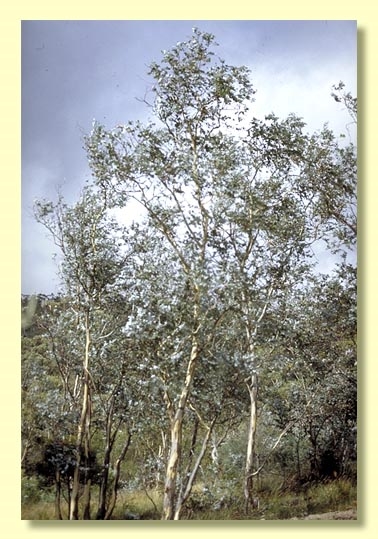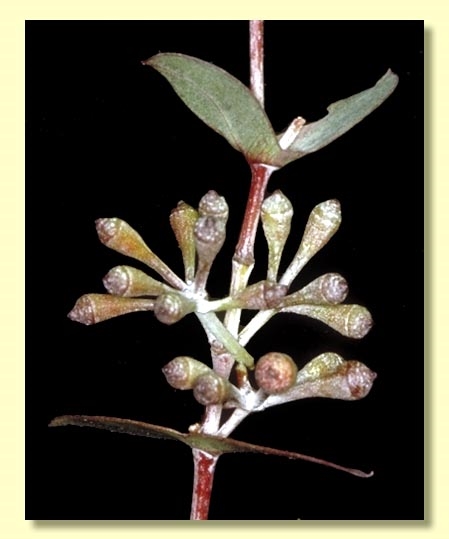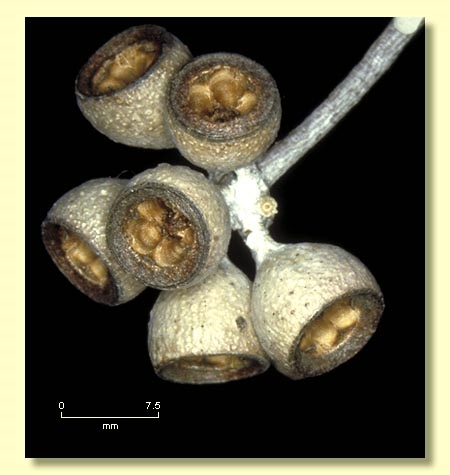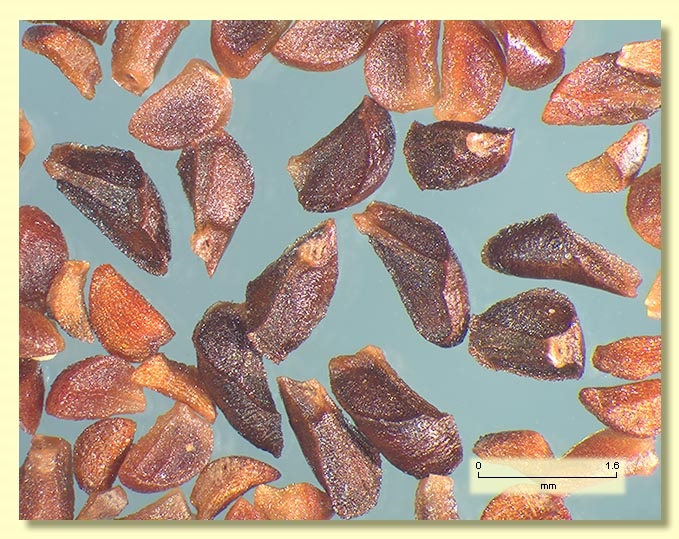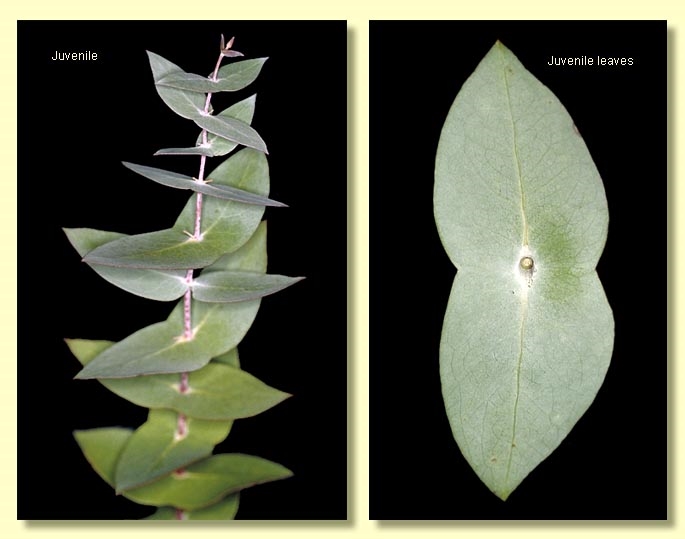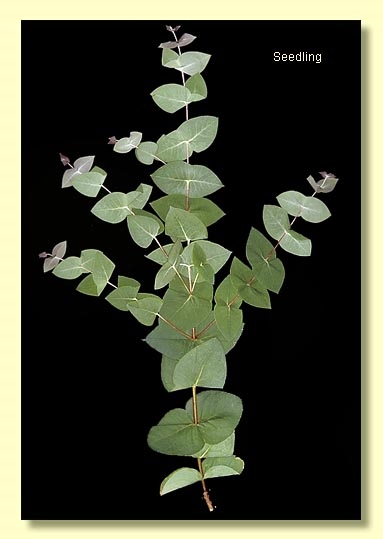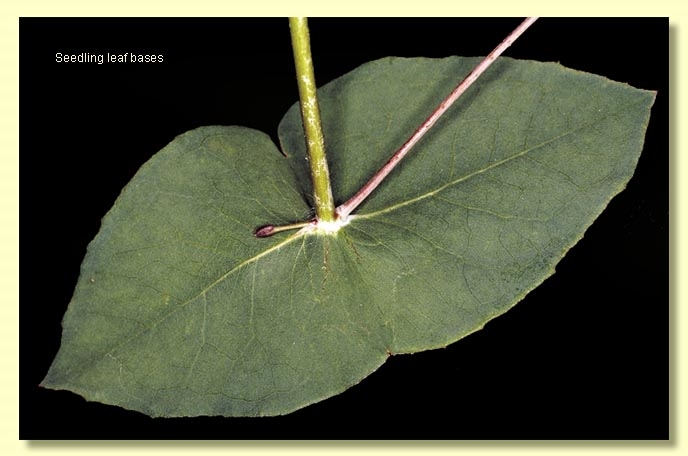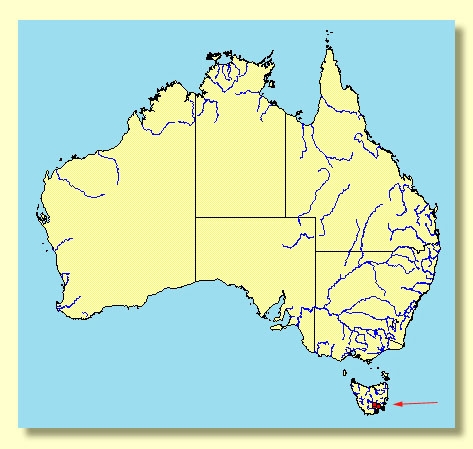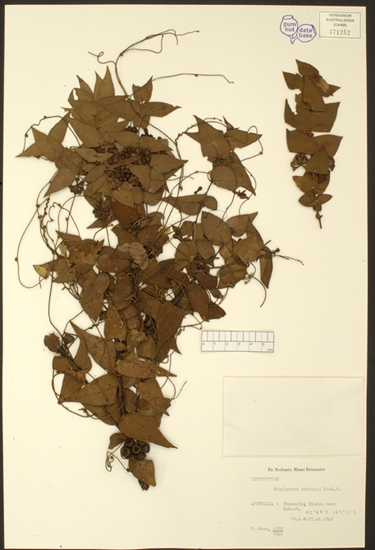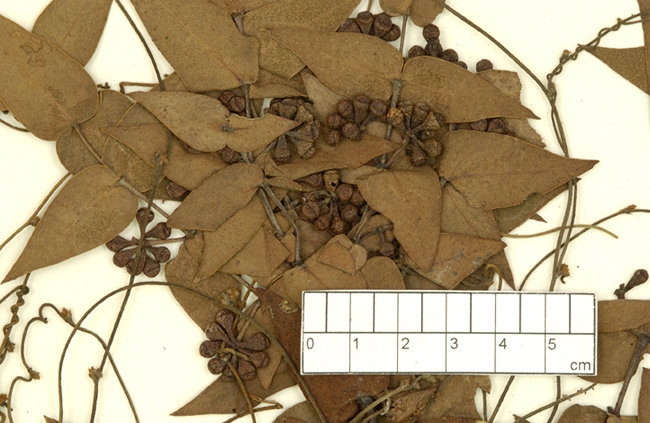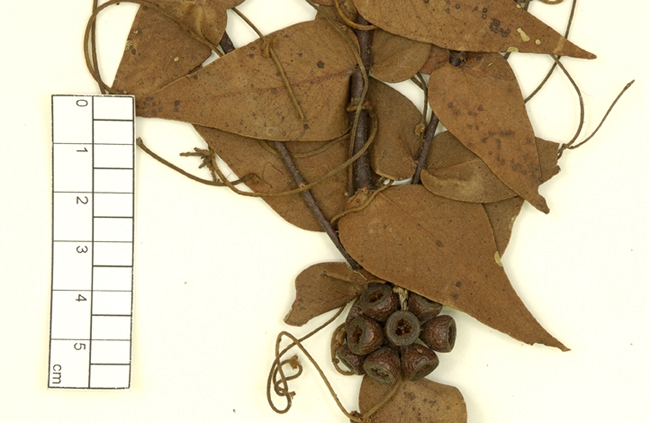Euclid - Online edition
Eucalyptus risdonii
Eucalyptus | Eucalyptus | Aromatica | Insulanae
Bark smooth throughout, mottled light grey, yellow, white or cream; branchlets glaucous; bark on small limbs show encircling scars left by fallen connate leaves.
Juvenile growth (coppice or field seedlings to 50 cm): stem rounded in cross-section, glaucous, warty; juvenile leaves opposite, sessile, ovate, 2–5 cm long, 2–5 cm wide, bases connate, glaucous or blue-grey.
Crown usually of juvenile leaves.
Adult leaves, when formed, alternate with petioles to 2.5 cm long; blade lanceolate to 10 cm long, 2 cm wide, dull, glaucous weathering green, side-veins greater than 45° to midrib, sparsely to moderately reticulate, intramarginal vein remote from margin (sometimes doubled), with island oil glands.
Inflorescence axillary unbranched, peduncles 0.5–2.5 cm long, buds 9 to 15 per umbel, pedicels 0.2–0.5 cm long. Mature buds obovoid to clavate, 0.4–0.7 cm long, 0.3–0.5 cm wide, glaucous, or weathering red and green, usually minutely warty on operculum, scar absent, operculum usually rounded to flattened, usually with a depressed ring at join with hypanthium, stamens inflexed or irregularly flexed, anthers reniform to cordate, versatile, dorsifixed, dehiscing by confluent slits, style long, stigma blunt or tapered, locules 3 or 4(5), the placentae each with 2 or sometimes 4 vertical ovule rows. Flowers white.
Fruit on pedicels 0.1–0.3 cm long, cup-shaped, obconical or hemispherical, 0.6–1 cm long, 0.6–0.9 cm wide, glaucous or non-glaucous, disc level or descending, valves 3 or 4(5), enclosed.
Seeds dark brown to brown, 1.2–2 mm long, pyramidal or obliquely pyramidal, dorsal surface smooth, hilum terminal.
Cultivated seedlings (measured at ca node 10): cotyledons reniform; stems rounded in cross-section, warty, glaucous; leaves sessile, opposite for many nodes, ovate, 3–5.5 cm long, 2.5–4.8 cm wide, the bases usually connate, margin minutely denticulate or entire, apex pointed, dull, glaucous weathering to blue-grey.
Flowering has been recorded in January, November and December.
A small tree of localised and scattered distribution in low hilly country east of the Derwent River in Tasmania from Geilston Bay and Risdon south-east to Cambridge.
Eucalyptus risdonii is easily recognised from a distance on hillsides by the glaucous crowns which, on inspection, are seen to be composed of sessile, ovate, opposite, glaucous juvenile leaves. Many leaf pairs are connate at the base; branchlets, buds and fruit are strongly glaucous.
Eucalyptus risdonii belongs to Eucalyptus subgenus Eucalyptus section Aromatica (the peppermints) because the buds have a single operculum, anthers are reniform, ovules are in two rows, seeds are more or less pyramidal, and juvenile leaves are sessile and opposite for many pairs. Within this section, E. risdonii belongs to an endemic Tasmanian series of 7 species, series Insulanae, with the other species being E. pulchella, a smooth or partly rough-barked tree with a crown of linear, green adult leaves; E. tenuiramis, a smooth-barked tree with glaucous branchlets and a crown of mixed alternate, petiolate, adult leaves and opposite, petiolate, intermediate leaves; E. nitida, a rough or partly rough-barked tree species (rarely almost smooth), with a crown of adult, petiolate, lanceolate, green leaves; E. amygdalina, a rough-barked tree of drier sites and with leaves narrower than E. nitida; and E. coccifera, a smooth-barked species of cold, high areas, with glaucous branchlets, elliptical to cordate (non-connate) juvenile leaves and a crown of elliptical to lanceolate adult leaves and warty buds in clusters of three, seven or nine (the other species have buds in clusters of nine or more). The 7th species in series Insulanae is the more recently described E. nebulosa , a small smooth-barked tree with grey-blue crown, restricted to serpentine geology on ridges north-west of Rosebery; it has narrowly elliptical adult leaves in the crown and sessile short broad elliptical juvenile leaves on coppice growth.
The only other peppermint species found in Tasmania is the more distantly related, common mainland species, E. radiata subsp. radiata, a rough-barked, tall, forest tree restricted, in Tasmania, to the Lemonthyne area. It has a narrow-leaved crown of adult leaves, whilst the lanceolate juvenile leaves have numerous oil glands.

